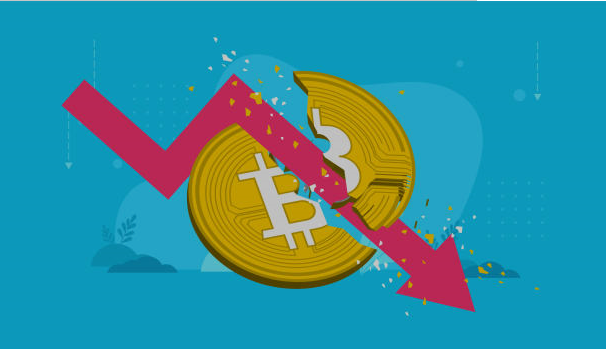Crypto staking is an innovative way for users to earn passive income while supporting blockchain networks. However, it also comes with risks and considerations that users should be aware of before staking their cryptocurrency holdings. In this article, we will discuss the risks and considerations of crypto staking.
Volatility
One of the primary risks of crypto staking is volatility. The value of cryptocurrency is highly volatile and can fluctuate significantly over a short period. This means that the rewards earned from staking can also fluctuate significantly. Users need to be prepared for the possibility of significant gains or losses.
Technical Knowledge and Skills
Crypto staking requires technical knowledge and skills. Users need to set up a digital wallet that supports staking, transfer their cryptocurrency holdings to the wallet, and follow the staking requirements. Users need to understand the staking process, network requirements, and risks before staking their cryptocurrency holdings.
Staking Requirements
Each cryptocurrency has different staking requirements, such as minimum holdings, staking periods, and rewards. Users need to understand these requirements and evaluate whether they are comfortable meeting them before staking their holdings.
Risk of Loss
Crypto staking comes with the risk of loss. The value of cryptocurrency can drop significantly, resulting in a loss of value for staked holdings. Users need to evaluate the risks and potential losses before staking their cryptocurrency holdings.
Security Risks
Crypto staking comes with security risks. Users need to choose a reputable staking wallet with strong security features to protect their cryptocurrency holdings. Staking wallets can be vulnerable to hacking and other security breaches, resulting in the loss of staked holdings.
Centralization Risks
Crypto staking can also lead to centralization risks. Some cryptocurrencies may have a significant concentration of staked holdings among a few large holders, leading to the centralization of network power. This can pose a risk to network security and decentralization.
Considerations for DeFi Staking
DeFi staking comes with additional risks and considerations, such as smart contract vulnerabilities, liquidity risks, and potential hacks. Users need to carefully evaluate the risks and potential rewards before participating in DeFi staking.
Considerations for Stablecoin Staking
Stablecoin staking also comes with additional risks and considerations, such as counterparty risks, credit risks, and regulatory risks. Users need to evaluate the risks and potential rewards before staking their stablecoins.
Best Practices for Crypto Staking
To minimize risks and maximize rewards when participating in crypto staking, users should follow best practices. Here are some of the best practices for crypto staking:
Choose a Reputable Staking Wallet
Choosing a reputable staking wallet with strong security features is essential for protecting your cryptocurrency holdings. Look for a wallet that has a track record of security and offers features such as two-factor authentication, cold storage, and multi-sig protection.
Understand the Staking Requirements and Rewards
Before staking your cryptocurrency holdings, make sure to understand the staking requirements and rewards. Each cryptocurrency has different staking requirements, such as minimum holdings, staking periods, and rewards. Evaluating these factors will help you decide whether staking is a good investment for you.
Diversify Your Staking Portfolio
Diversifying your staking portfolio can help minimize risks and maximize rewards. Consider staking different cryptocurrencies with different staking requirements and rewards to spread out your investments.
Evaluate the Risks and Rewards
Before staking your cryptocurrency holdings, evaluate the risks and rewards carefully. Consider factors such as volatility, technical requirements, security risks, and centralization risks. Make an informed decision based on your risk tolerance and investment goals.
Follow News and Developments
Staying up-to-date on news and developments in the cryptocurrency market can help you make informed decisions about staking. Follow reputable sources such as industry blogs, news outlets, and social media accounts to stay informed.
Staking Pools
Staking pools are a popular option for users who want to participate in staking but may not have enough cryptocurrency to meet the minimum staking requirements. In a staking pool, users pool their cryptocurrency holdings and earn rewards proportionally based on their contribution to the pool. Staking pools can be centralized or decentralized and charge a fee for their services.
Governance and Voting
Many PoS blockchains offer governance and voting rights to stakers. This means that stakers can vote on important network decisions such as upgrades, proposals, and funding. Stakers with more cryptocurrency holdings generally have more voting power. Governance and voting can be an important factor to consider when evaluating a cryptocurrency for staking.
Staking on Exchanges
Some cryptocurrency exchanges offer staking services for their users. This means that users can stake their cryptocurrency holdings directly on the exchange platform and earn staking rewards. Staking on exchanges can be a convenient option for users who want to participate in staking without the technical knowledge and skills required for setting up a staking wallet.
Environmental Impact
PoW consensus algorithms, such as those used by Bitcoin, are known for their high energy consumption and environmental impact. PoS consensus algorithms, on the other hand, are generally considered to be more energy-efficient and environmentally friendly. This is because PoS validators do not need to compete to solve complex mathematical puzzles, which requires significant computational power.
Future of Staking
As the cryptocurrency market continues to evolve, crypto staking is likely to become an even more popular investment option for users. With the rise of DeFi, stablecoin staking, and other innovative applications of blockchain technology, there is significant potential for crypto staking to become a mainstream investment option. Moreover, with the introduction of Ethereum 2.0, which is expected to fully transition to a PoS consensus algorithm, the importance and popularity of crypto staking are expected to grow even further.
Conclusion
Crypto staking can be a lucrative way for users to earn passive income while supporting blockchain networks. However, it also comes with risks and considerations that users need to be aware of before staking their cryptocurrency holdings. By carefully evaluating the risks and potential rewards, users can make informed decisions about whether to participate in crypto staking. Users also need to follow best practices, choose a reputable staking wallet, and understand the staking requirements and network risks.




